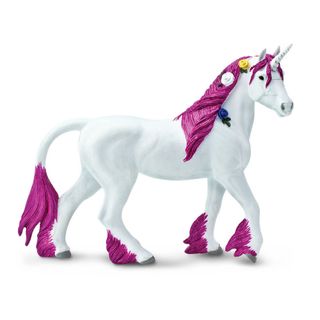
Safari Ltd Woolly Mammoth Ws Prehistoric World
Description
The woolly mammoth is a close relative of modern elephants. Its hairy coat helped it to keep warm while it foraged for grasses to eat during the end of the ice age, 400,000 to 4,000 years ago. Herds of woolly mammoths had a broad range across northern Europe and Asia, and North America.
- Scientific Name: Mammuthus primigenius
- Characteristics: The woolly mammoth had a pair of giant curved tusks, relatively small ears, a trunk, and a coat of brown hair all over its body. It walked on four legs and was about the same size as a modern African elephant. Large adults could reach over 11 feet tall.
- Size and Color: This adult woolly mammoth model is 5.5 inches long and 5.5 inches high. It is colored in natural shades of brown and is positioned in a trumpeting pose with its trunk in the air.
- The Wooly Mammoth is part of the Wild Safari® Prehistoric World collection
- All of our products are Non-toxic and BPA free
History
The woolly mammoth was scientifically named in 1799, but at this time it was placed in the same genus as the modern Asian elephant. It was eventually given a new genus name in 1828 – Mammuthus. Many types of mammoth have been named since then, but only one species, Mammuthus primigenius, goes by the common name of woolly mammoth. It is known from hundreds of skeletons, tusks, and teeth.
The woolly mammoth lived in huge herds that roamed across northern Europe and Asia from 400,000 years ago. Later populations of woolly mammoth coexisted alongside early humans, who hunted them for meat and fur. This may have contributed to the extinction of the woolly mammoth from its mainland range 10,000 years ago. The remaining isolated pockets of woolly mammoth populations became extinct just 4,000 years ago.
The life appearance of the woolly mammoth is particularly well known because it is depicted in prehistoric human cave paintings. However, it is also known from spectacular woolly mammoths found preserved in ice. These frozen creatures from icy tundra of Siberia and Alaska include soft tissues and hair, which provide information on their shaggy coats of red-brown fur. This ‘woolly’ coat is how the woolly mammoth got its name.
The woolly mammoth had several adaptations for living in the cold. It addition to its insulating fur, it had a three-inch layer of fat, relatively small ears and a short tail to avoid losing heat and to help stop frostbite. It also had large tusks to helped shift snow to get to the vegetation below.
- Size in cm: 14 L x
- Size in inches: 5.51 L x
- UPC: 095866279929









